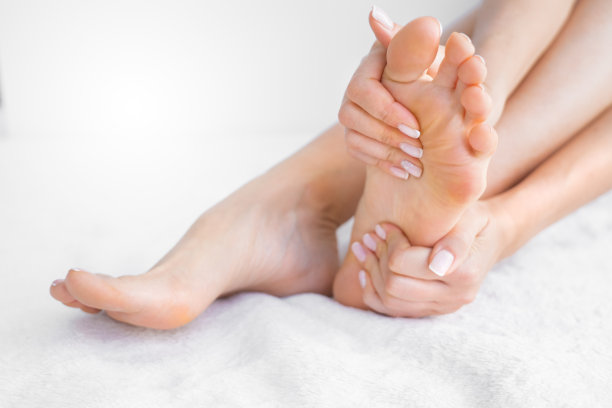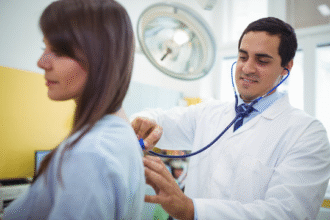Athlete’s Foot (Tinea Pedis)
Athlete’s foot is a superficial fungal infection of the feet caused by dermatophytes (most commonly Trichophyton species), manifesting with pruritus, scaling, and sometimes vesicles or fissures.
Key points
- Common in hot, humid environments and athletes; spread via contact with contaminated surfaces.
- Three major clinical patterns: interdigital, moccasin, and vesiculobullous forms.
- Essential to maintain foot hygiene and dryness; topical therapy suffices for most cases.
- Systemic therapy reserved for extensive, recurrent, or refractory infections and immunocompromised hosts.
Clinical presentations
1) Interdigital (most frequent)
– Maceration, fissuring, and pruritus, especially between the fourth and fifth toes.
2) Moccasin distribution
– Matte, dry hyperkeratotic scaling on soles and sides of feet resembling a moccasin pattern.
3) Vesiculobullous (inflammatory)
– Vesicles or bullae on the plantar surface or instep, often intensely pruritic.
Risk factors
- Occlusive footwear and synthetic socks
- Excessive sweating (hyperhidrosis)
- Walking barefoot in communal areas (pools, locker rooms)
- Secondary infection from nail or other dermatophyte sites
- Immunosuppression (diabetes, HIV), poor self-care
Diagnosis
- Clinical examination in typical cases.
- KOH preparation of skin scrapings: branching septate hyphae.
- Fungal culture or PCR for atypical, refractory, or recurrent infections.
Differential diagnosis
- Contact dermatitis, eczema, plantar psoriasis, erythrasma, pitted keratolysis, pompholyx, intertrigo.
Treatment
Topical antifungals (first-line)
- Terbinafine 1% cream or gel: apply once daily for 7 days (interdigital) or up to 14 days (moccasin).
- Butenafine 1% cream: once daily for 1–2 weeks.
- Azoles (clotrimazole 1%, miconazole 2%): apply twice daily for 2–4 weeks.
- Antifungal powders (tolnaftate) to keep skin dry.
Systemic therapy (extensive or refractory)
- Terbinafine 250 mg PO once daily for 2–4 weeks.
- Itraconazole 200 mg PO daily or pulse dosing (200 mg BID for 1 week monthly x 2 months).
- Fluconazole 150–300 mg PO once weekly for 2–4 weeks (alternative).
Adjunctive measures
- Wash and dry feet thoroughly; pay special attention between toes.
- Rotate shoes daily; use breathable footwear.
- Wear absorbent cotton socks; change socks and shoes if they become damp.
- Avoid walking barefoot in communal facilities; use sandals.
Prevention and maintenance
- Foot hygiene: daily washing with soap, complete drying.
- Prophylactic antifungal powders in shoes and socks.
- Alternate shoes and rotate to allow full drying.
- Regular inspection for recurrence, especially in at-risk populations.
Complications and referral criteria
- Secondary bacterial infection: pain, erythema, swelling—consider antibiotics.
- Onychomycosis requiring specialist care.
- Immunocompromised or diabetic patients: early systemic therapy and dermatology referral.
Patient education
- Complete full course of treatment even if symptoms improve.
- Maintain foot hygiene and dryness to prevent recurrence.
- Recognize signs of spread or secondary infection and seek medical attention.







